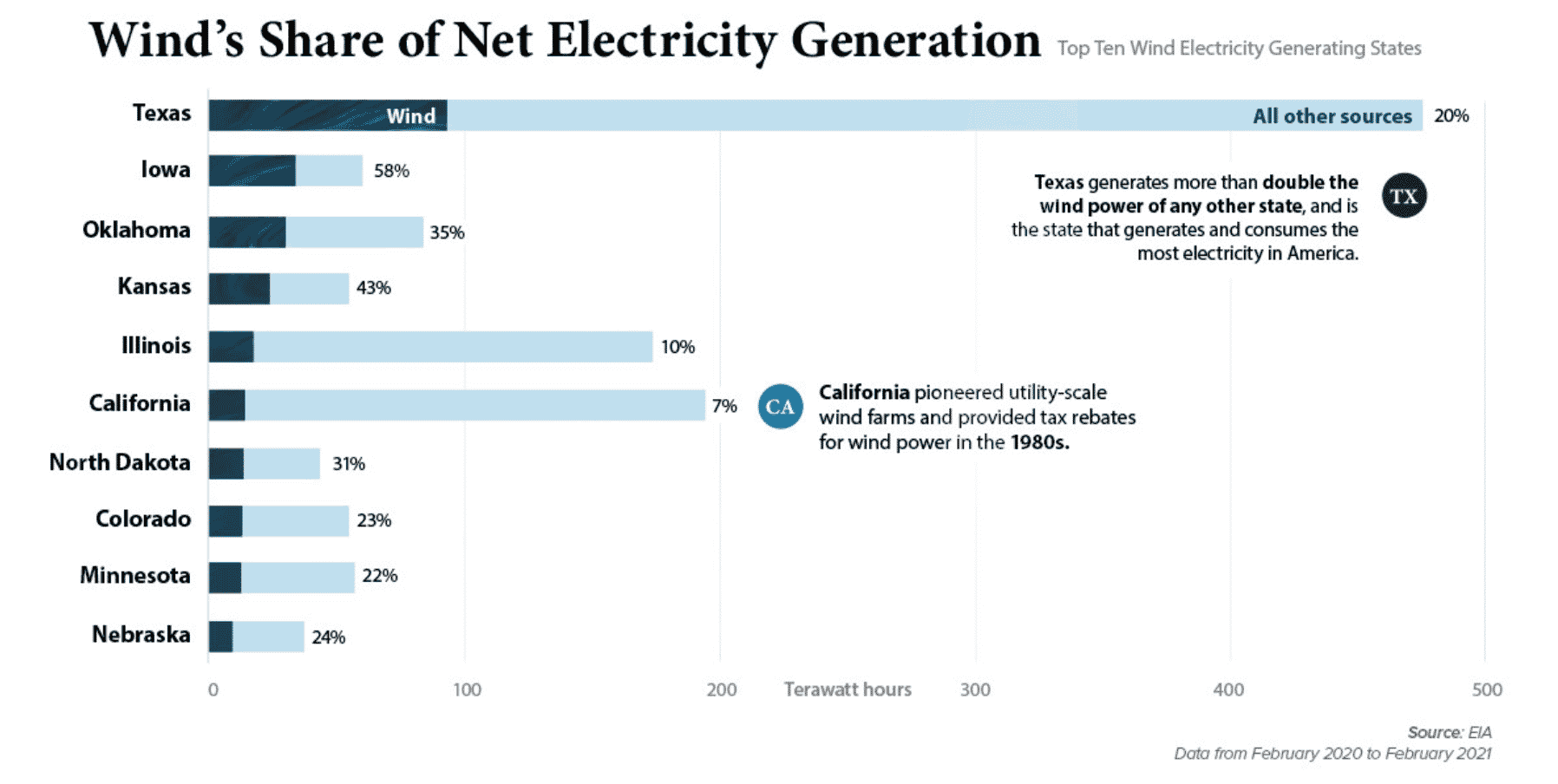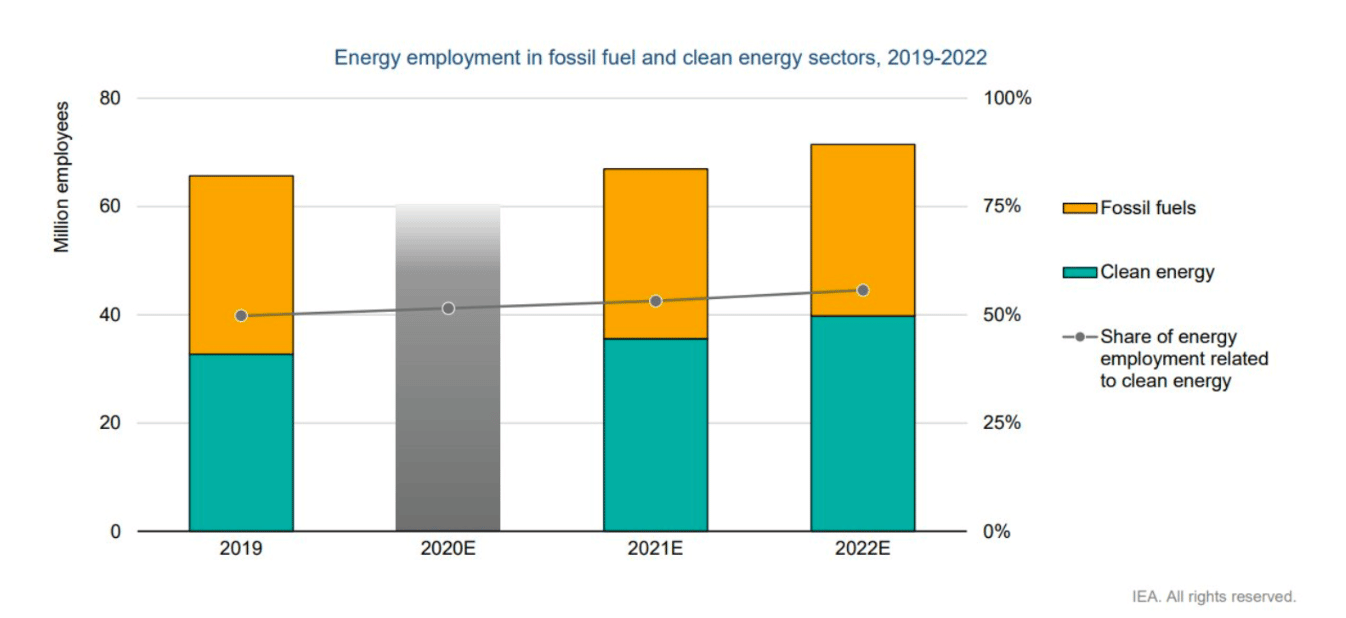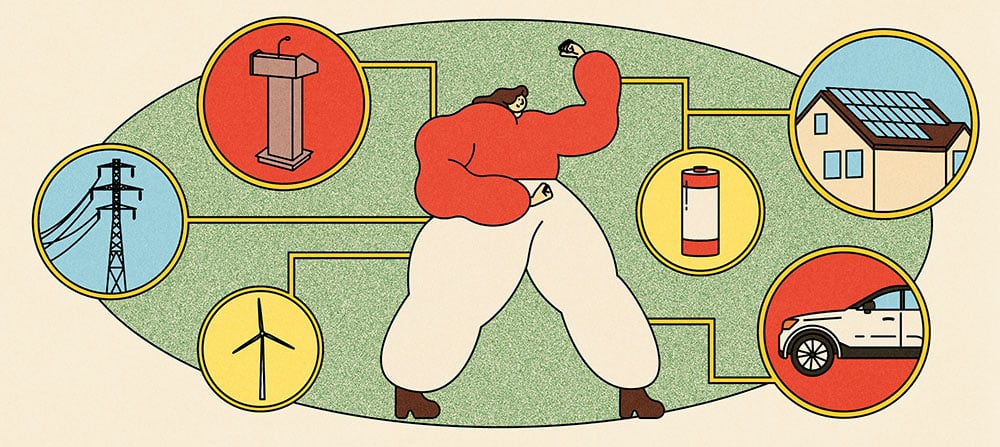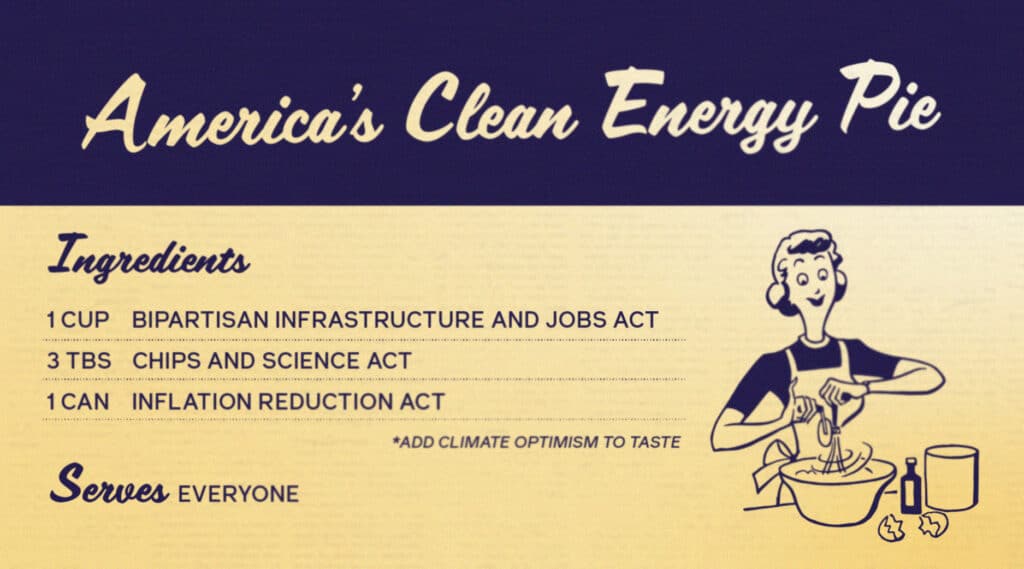Sometimes American political discourse can feel so divisive that it seems we face an unbridgeable chasm. But on some issues – like in the case of clean energy – there is, perhaps surprisingly, wide agreement on both sides of the political aisle.
It’s hard to argue with this common sense point from conservative Republican Tom Ridge: “Any reasonable policy will require people across the political spectrum to recognize, first, that climate change is a serious problem and, second, that the United States, with its enormous appetite for energy, must harness all practical carbon-free sources.”
“Any reasonable policy will require people across the political spectrum to recognize, first, that climate change is a serious problem and, second, that the United States, with its enormous appetite for energy, must harness all practical carbon-free sources.”
A large majority of us believe we should be generating more wind (66%) and solar energy (73%), according to Gallup poll results from 2021, and 60% of us favor dramatically reducing U.S. use of fossil fuels such as gas, oil, and coal. Recent polling from Yale University finds a majority of registered voters think developing sources of clean energy should be a high or very high priority, as 52% of Americans think policies that promote clean energy will improve economic growth and create jobs. Yet another poll from Pew Research finds similarly high levels of support for wind and solar, though it notes the gap between Democrats and Republicans has widened.
Climate denial, doubt, and delay, in addition to attacks on climate science, hinder American democracy. This rhetoric shouldn’t be ignored, but there’s no time to delay climate action further. In this energy transition, it’s important to recognize that not only is there widespread support for clean energy, but red states are actually helping to lead it. Here are four ways they are moving the clean energy economy forward.
Clean energy generation
Across multiple measures—total renewable energy generation, most clean power added in 2021, and highest shares of wind and solar on the grid—red states, including Texas, Oklahoma, Kansas, and Florida are renewable energy powerhouses, and voted for Trump notwithstanding.
“On just about any metric you care to look at, the green transition’s physical assets are more often found on red ground than on blue,” the authors of a recent Bloomberg Opinion column write. “The most obvious reason for this is the ground itself.” Across much of the country’s rural real estate, wind and solar make good economic sense, even if that real estate happens to lie within Republican-led districts.

Clean energy jobs and investment
Growing clean energy development translates to added jobs and investment. In fact, regardless of the opposition from some Republican leaders, the recently passed Inflation Reduction Act will send billions of dollars to their states to build on progress already being made in clean energy. According to the White House’s state fact sheets on the law, Texas has 238,884 workers in clean energy jobs and will see an estimated $66.5 billion of investment in large-scale clean power generation and storage over the next eight years.

Across 30 states, many of them Republican-leaning, jobs in renewable energy now outnumber those in coal and gas, according to the Environmental Defense Fund, and nationwide, clean energy jobs employ 3.5 times more people than the fossil fuel industry.
Billions more dollars have flowed to red states through the Volkswagen settlement for the automaker’s violation of the Clean Air Act. States like North Carolina are using the money to buy electric school buses and other zero- or low-emission vehicles.
Although you won’t find many EVs on the back roads yet in Alabama and Tennessee, thousands of residents in these states have taken on jobs in EV manufacturing to meet growing nationwide demand. Forty-six percent of vehicle production in the U.S. currently happens in the South, so it’s no surprise that more investment is going there. Ford plans to build twin battery plants in central Kentucky, creating over 11,000 local EV jobs, and Volkswagen’s recent Battery Engineering Lab now employs over 4,000 Chattanooga, TN, locals. Hyundai also plans to build its first EV-only plant in the U.S., right outside of Savannah, Georgia.
Climate goals
When state economies run on increasing amounts of renewable energy, net-zero emissions policies start to look better and better. Nebraska’s largest electric utility, which is publicly owned, recently set a goal to decarbonize its power sector by 2050. Though the state still gets most of its power from coal, wind power is strong there and bound to get even stronger, with an estimated $24.5 billion of clean power investment coming in from the Inflation Reduction Act. North Carolina, too, recently passed climate legislation, putting the state on a path to zero out carbon emissions from electricity. These shifts reflect the reality seen in the poll results: the public supports clean energy and the policies that increase it.
City-level action
Despite significant clean energy advancement, many red states (and, to be fair, many blue states) still lag in important climate measures like carbon emissions per dollar of economic output, support for federal climate policies and fossil fuel industry regulations, building energy codes, and electric vehicle adoption and incentives (though Florida and Texas are in the top three for EV registrations, behind California). Here’s where cities and counties have an opportunity to take up the slack. Places like Orlando, Cincinnati, and San Antonio are pursuing sustainable initiatives through the Bloomberg American Cities Climate Challenge, while the U.S. government’s Clean Cities Coalition Network is helping to advance better transportation options at the municipal level.
All of this adds up to common ground. Advocates like Conservatives for Clean Energy, a group that focuses on five Southeastern states, emphasize the economic opportunity of clean energy more than the environmental benefits. Regardless of how they frame the issue, however, the goal is the same: To expand the nation’s store of reliable, affordable energy.
Despite the deep political divisions in our country, we can all unite behind a better, cleaner future. As we near the holiday season and uncomfortable climate conversations arise, we can share how the clean energy transition will benefit all Americans and how many red states are leading the way towards a clean energy future.















